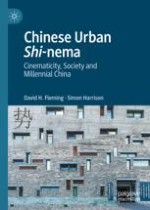2020 | OriginalPaper | Buchkapitel
3. Commercial Overground Shi-Nema: Some Notes on Cinematicity and Its Propensity for Selling Dream (Un)Real Estate in Contemporary China
verfasst von : David H. Fleming, Simon Harrison
Erschienen in: Chinese Urban Shi-nema
Aktivieren Sie unsere intelligente Suche, um passende Fachinhalte oder Patente zu finden.
Wählen Sie Textabschnitte aus um mit Künstlicher Intelligenz passenden Patente zu finden. powered by
Markieren Sie Textabschnitte, um KI-gestützt weitere passende Inhalte zu finden. powered by
